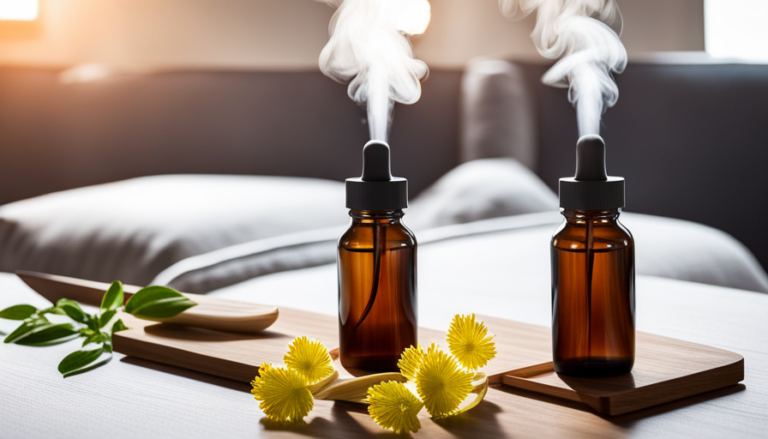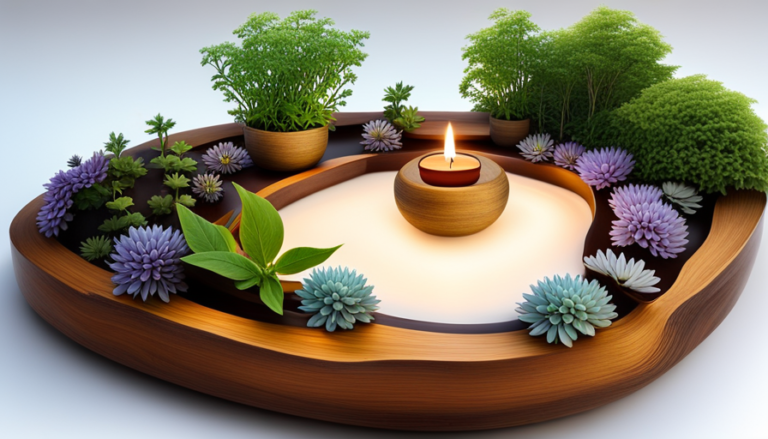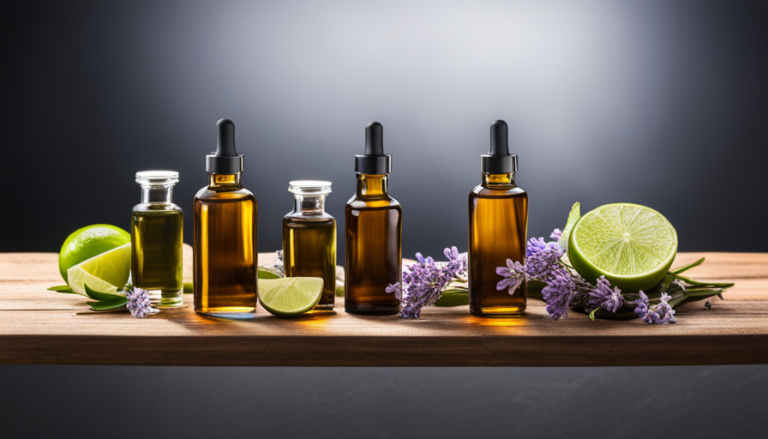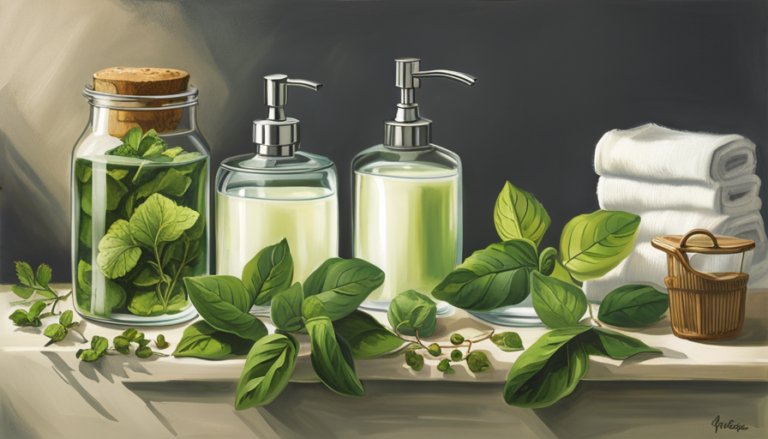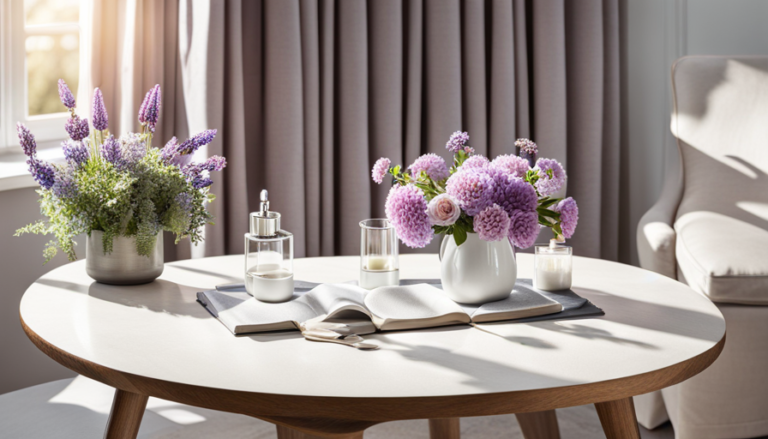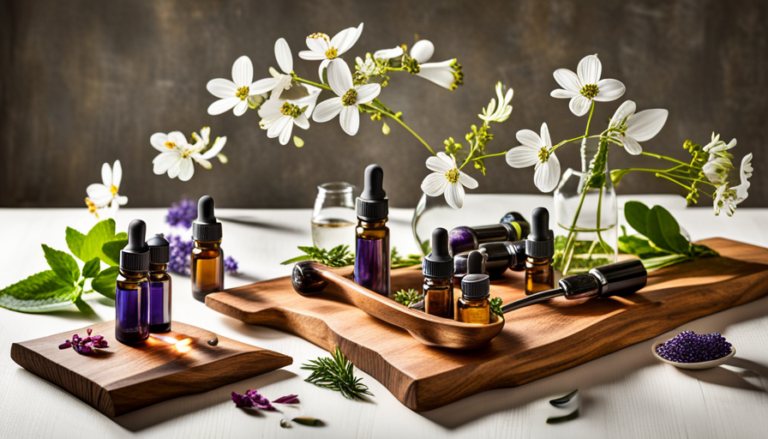How Many Drops Of Essential Oil In 10ml Of Carrier Oil

Are you ready to unlock the full potential of your essential oils? Finding the perfect dilution ratio can be a daunting task, but fear not! In this article, we will explore the art of blending essential oils with carrier oils specifically focusing on how many drops of essential oil you should use in 10ml of carrier oil.
By following our expert guidelines and experimenting with different ratios, you’ll soon discover the ideal balance for your unique needs. Get ready to elevate your aromatherapy game to new heights!
Key Takeaways
- Dilution methods ensure safety and effectiveness of essential oils
- The general guideline is a 2% dilution for adults (12 drops per ounce)
- Choosing the right carrier oil is important for personalized experience and benefits
- Experiment and adjust the amount of essential oil based on personal preference and tolerance
Understand the Dilution Ratio
You should understand the dilution ratio when determining how many drops of essential oil to add to 10ml of carrier oil. Understanding dilution methods is crucial in order to ensure safety and effectiveness when using essential oils. Diluting essential oils in a carrier oil helps prevent skin irritation or sensitization, as well as maximizes their therapeutic benefits.
To calculate proper ratios, you need to consider the specific essential oil being used and the purpose of your blend. General guidelines recommend a 2% dilution for adults, which means adding 12 drops of essential oil per ounce (30ml) of carrier oil. For a 10ml bottle, this would be approximately 6 drops.
It’s important to follow general guidelines for dilution ratios to avoid any adverse reactions or negative effects. By understanding the dilution ratio and following these guidelines, you can safely incorporate essential oils into your daily routine.
Follow General Guidelines
To determine the appropriate amount, simply follow the general guidelines for diluting essential oils in carrier oil.
When it comes to choosing the best carrier oils, options like coconut, jojoba, and almond oil are commonly recommended due to their compatibility with a wide range of essential oils. These carrier oils not only help to dilute the essential oil but also aid in its absorption into the skin.
It’s important to note that each person’s sensitivity may vary, so it’s always wise to start with a low dilution and gradually increase if needed. Additionally, keep in mind any potential risks associated with specific essential oils or individual allergies.
By following these guidelines and being aware of potential risks, you can safely enjoy the benefits of using essential oils in your daily routine.
Start with a Low Dilution
Begin with a low dilution to ensure safe and effective use of essential oils. By starting with a small amount of essential oil in your carrier oil, you can gauge how your skin reacts and prevent any potential irritation. It’s important to choose the right carrier oil for your needs, as different oils offer various benefits. For example, jojoba oil is great for moisturizing dry skin, while coconut oil has antimicrobial properties. To help you visualize the proper ratio, imagine a 3×3 table: on one side, you have the carrier oil listed (such as sweet almond or grapeseed), in the middle column are the number of drops of essential oil (ranging from 1-3), and on the other side are the corresponding benefits (like calming or invigorating). This method ensures that you achieve optimal results without overwhelming your system. Moving forward into our next section about using a dropper or pipette will allow for precise measurements and easy application.
Use a Dropper or Pipette
Start by utilizing a dropper or pipette for precise and effortless application of your chosen essential oil. Both options offer measuring accuracy, but there are slight differences between them.
A dropper typically has a rubber bulb at the top, allowing you to squeeze and release the oil drop by drop. This makes it easier to control the amount of oil you add to your carrier oil.
On the other hand, a pipette usually consists of a thin glass tube with markings indicating different measurements. You can draw up the desired amount of essential oil into the pipette and then transfer it to your carrier oil with precision.
Whichever tool you choose, ensure that you follow recommended guidelines for dilution ratios and adjust as needed based on personal preference and experience.
Transitioning into the next section, remember that experimentation and adjustment play crucial roles in finding your perfect blend.
Experiment and Adjust
When experimenting with different blends, it’s important to adjust the amount of essential oil based on personal preference and experience. Everyone’s tolerance and sensitivity to essential oils can vary, so finding the right balance is key. Start by adding a small number of drops, around 2-3, to your carrier oil and test it out. If you find that the scent is too weak or not potent enough, gradually increase the number of drops until you achieve your desired strength. On the other hand, if the aroma is overwhelming or causes irritation, reduce the number of drops accordingly. Remember to keep track of your experiments in a journal or notebook for future reference. Exploring alternatives and finding what works best for you will ensure an enjoyable and personalized aromatherapy experience.
| Drops of Essential Oil | Strength/Intensity |
|---|---|
| 2-3 | Mild |
| 4-6 | Moderate |
| 7-9 | Strong |
| 10+ | Very strong |
Conclusion
So there you have it, a comprehensive guide on how many drops of essential oil to use in 10ml of carrier oil. By understanding the dilution ratio and following general guidelines, you can ensure the safety and effectiveness of your essential oil blends.
Remember to start with a low dilution and use a dropper or pipette for accurate measurements. And don’t be afraid to experiment and adjust until you find the perfect blend for your needs. Just like finding the right balance in life, finding the right balance in your essential oil blends is key.
Happy blending!

